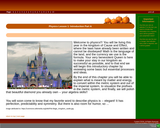
This lesson reviews basic concepts and math skills that are used throughout a physics course.
- Subject:
- Physical Science
- Physics
- Material Type:
- Lesson
- Author:
- Linda Warner
- Date Added:
- 08/23/2018

This lesson reviews basic concepts and math skills that are used throughout a physics course.
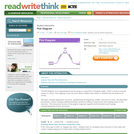
The Plot Diagram is an organizational tool focusing on a pyramid or triangular shape, which is used to map the events in a story. This mapping of plot structure allows readers and writers to visualize the key features of stories.
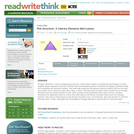
Students learn that the plot structure described by Freytag's Pyramid is actually quite familiar as they diagram the plots of a familiar story, a television show, and a narrative poem.

When reading a narrative, there are some key story elements to pay close attention to. The two we are focusing on in this seminar are setting and plot. You will be able to describe in depth the setting and the plot using specific details from the text. First, you will be applying past knowledge to help you identify the parts of a plot as well as the setting. Using a graphic organizer, you will be listening to audiobooks and filling in these five elements of exposition, rising action, climax, falling action, and resolution. By looking closely at a story, you are learning how a story is written and how important these parts are.StandardsCC.1.3.4.C Describe in depth a character, setting or event in a story or drama, drawing on specific details in the text.

This seminar focuses on the standard plot line. More than just a beginning, middle, and end, plot lines follow an arc with identifiable actions along the way. In short stories, plays, novels, movies, etc., the Freytag Pyramid structure is recognizable. Throughout this seminar, you will use prior knowledge of plot lines to connect to new reading, along with creating your own plot line with identifiable parts.
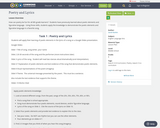
How can poetry be fun for all 8th grade learners? Students have previously learned about poetic elements and figurative language. Using those skills, students apply the knowledge to demonstrate the poetic elements and figurative language in a favorite song.

Structure for a lesson plan, with detailed steps to achieve an edited and composited portrait.
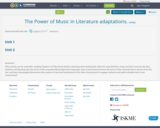
This activity can be used after reading Chapter 5 of The Great Gatsby. Listening and watching the video for Lana Del Rey's song, and title track for the film, students will dig deep into the lyrics of the song identifying figurative language, draw connections between the lyrics of the song and direct quotes from the text, and have meaningful discussion about point-of-view and symbolism in the video. Guaranteed to engage students and make valuable text to text connections!

In this seminar, you will be discovering how adding prefixes and suffixes to root words change the meanings of the root words. Additionally, you will be learning the meaning of common prefixes and suffixes. You will also be choosing the correct prefix and suffix to add to certain root words by classifying and comparing meanings of prefixes and suffixes and accessing prior knowledge.StandardsCC.1.1.3.DKnow and apply grade-level phonics and word analysis skills in decoding words. • Identify and know the meaning of the most common prefixes and derivational suffixes.
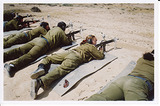
By the end of this section, you will be able to:Define and distinguish among prejudice, stereotypes, and discriminationProvide examples of prejudice, stereotypes, and discriminationExplain why prejudice and discrimination exist

By the end of this section, you will be able to:Define and distinguish among prejudice, stereotypes, and discriminationProvide examples of prejudice, stereotypes, and discriminationExplain why prejudice and discrimination exist
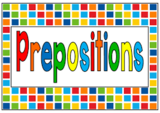
The attached student lesson is designed for Grade 4 English Language Arts students. Students will apply knowledge of word structure elements, known words, and word patterns to identify and utilize prepositions.This student lesson addresses the following NDE Standard: NE LA 5.1.5.a.It is expected that this student lesson will take students 90 minutes to complete.

Use a 3 ½ minute Ted Talk video in EdPuzzle to learn about and answer questions about our government. Standard 5.05 Explain why people create governments and describe the structure of the government in the United States and how it functions to serve citizens.I can describe the purpose of a democracy/government.I can identify the three branches of government; Legislative, Judicial, and Executive.I can describe the functions of the three branches of government and checks and balances.Pre-lesson: Review prior knowledge on American Revolution

For this 3-part project, students will prepare for programming by practicing the problem-solving steps. They will select a problem that they are dealing with at home, at school, or a problem in the community. They will then research and gather data to help them find a step by step plan to solve the problem.
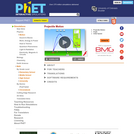
Blast a Buick out of a cannon! Learn about projectile motion by firing various objects. Set the angle, initial speed, and mass. Add air resistance. Make a game out of this simulation by trying to hit a target.

Psychology is designed to meet scope and sequence requirements for the single-semester introduction to psychology course. The book offers a comprehensive treatment of core concepts, grounded in both classic studies and current and emerging research. The text also includes coverage of the DSM-5 in examinations of psychological disorders. Psychology incorporates discussions that reflect the diversity within the discipline, as well as the diversity of cultures and communities across the globe.Senior Contributing AuthorsRose M. Spielman, Formerly of Quinnipiac UniversityContributing AuthorsKathryn Dumper, Bainbridge State CollegeWilliam Jenkins, Mercer UniversityArlene Lacombe, Saint Joseph's UniversityMarilyn Lovett, Livingstone CollegeMarion Perlmutter, University of Michigan


By the end of this section, you will be able to:Describe the different research methods used by psychologistsDiscuss the strengths and weaknesses of case studies, naturalistic observation, surveys, and archival researchCompare longitudinal and cross-sectional approaches to research
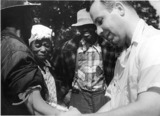
By the end of this section, you will be able to:Discuss how research involving human subjects is regulatedSummarize the processes of informed consent and debriefingExplain how research involving animal subjects is regulated
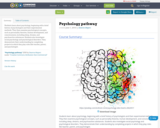
Students learn about psychology, beginning with a brief history of psychologists and their experimental methods. They then examine psychological concepts, such as personality theories, human development, and consciousness, including sleep, dreams, and psychoactive substances. Students also investigate social psychology and psychological disorders. They demonstrate their understanding by completing projects in which they play roles like teacher, parent, and psychologist.